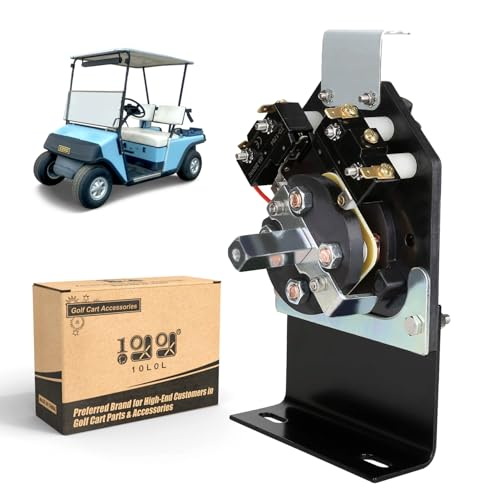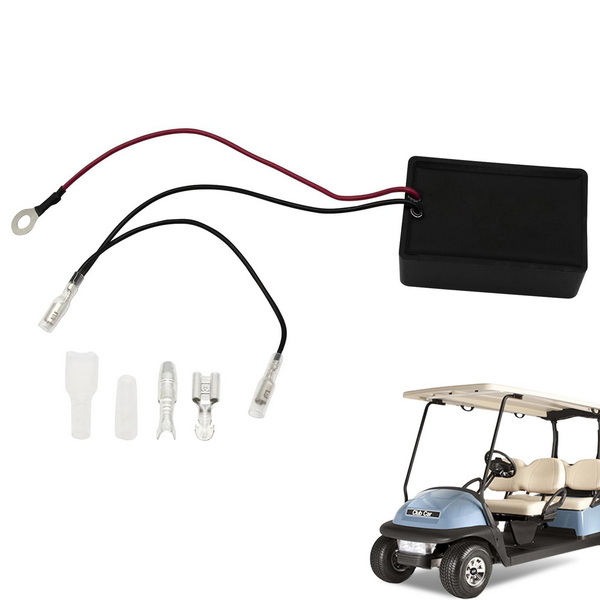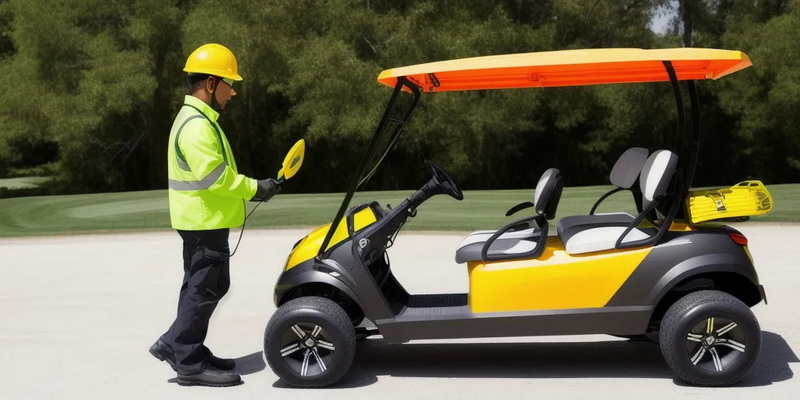Content Menu
● The Basics of Electric Golf Cart Accelerators
● Components of an Electric Golf Cart Accelerator System
● How the Accelerator System Functions
● Types of Accelerator Systems in Electric Golf Carts
>> Resistive Throttle System
>> Hall Effect Sensor System
● Advantages of Electric Golf Cart Accelerators
● Safety Features in Electric Golf Cart Accelerators
● Maintenance and Troubleshooting
● Future Trends in Electric Golf Cart Accelerators
● Environmental Impact
● Conclusion
● Frequently Asked Questions (FAQ)
>> 1. How does an electric golf cart accelerator differ from a car's gas pedal?
>> 2. Can I upgrade my golf cart's accelerator system?
>> 3. How often should I maintain my golf cart's accelerator system?
>> 4. Are electric golf cart accelerators waterproof?
>> 5. Can electric golf cart accelerators be adjusted for different driving modes?
Electric golf carts have become increasingly popular in recent years, not only on golf courses but also in various other settings such as retirement communities, college campuses, and even some urban areas. One of the most crucial components of these vehicles is the accelerator, which controls the speed and movement of the cart. In this comprehensive article, we'll explore the inner workings of electric golf cart accelerators, their components, and how they contribute to the overall performance of these eco-friendly vehicles.

The Basics of Electric Golf Cart Accelerators
At its core, an electric golf cart accelerator is a device that regulates the flow of electricity from the battery to the motor, thereby controlling the speed of the cart. Unlike traditional gasoline-powered vehicles, electric golf carts don't use a mechanical throttle system. Instead, they rely on electronic components to manage acceleration.
The accelerator pedal in an electric golf cart is connected to a potentiometer, which is essentially a variable resistor. As the driver presses down on the pedal, the potentiometer changes its resistance, sending a signal to the motor controller. This signal tells the controller how much power to deliver to the motor, determining the speed of the cart.
Components of an Electric Golf Cart Accelerator System
To understand how an electric golf cart accelerator works, it's essential to familiarize ourselves with its key components:
1. Accelerator Pedal: This is the physical interface that the driver interacts with to control the cart's speed.
2. Potentiometer: A variable resistor that translates the pedal's position into an electrical signal.
3. Motor Controller: The brain of the system, which interprets the signal from the potentiometer and regulates power to the motor.
4. Electric Motor: Converts electrical energy into mechanical energy to drive the cart's wheels.
5. Battery Pack: Provides the electrical power necessary to run the motor and other systems.
How the Accelerator System Functions
When a driver presses the accelerator pedal, a series of events occurs in rapid succession:
1. The pedal movement adjusts the potentiometer's resistance.
2. The potentiometer sends a varying voltage signal to the motor controller.
3. The motor controller interprets this signal and determines how much power to send to the motor.
4. The motor receives the appropriate amount of power and turns the drive shaft.
5. The drive shaft's rotation is transferred to the wheels, propelling the cart forward.
This process happens continuously and in real-time, allowing for smooth acceleration and deceleration as the driver modulates the pedal position.

Types of Accelerator Systems in Electric Golf Carts
There are primarily two types of accelerator systems used in electric golf carts:
Resistive Throttle System
This is the more traditional system that uses a potentiometer to vary resistance based on pedal position. It's simple, reliable, and has been used in electric vehicles for decades.
Hall Effect Sensor System
More modern electric golf carts may use a Hall effect sensor instead of a potentiometer. This system uses magnetic fields to detect pedal position, offering greater precision and durability as there are no mechanical parts to wear out.
Advantages of Electric Golf Cart Accelerators
Electric accelerators offer several benefits over their mechanical counterparts:
- Precise Control: Electronic systems allow for more precise control over acceleration.
- Smooth Operation: The absence of mechanical linkages results in smoother acceleration and deceleration.
- Low Maintenance: Fewer moving parts mean less wear and tear, reducing maintenance needs.
- Energy Efficiency: Electronic control systems can optimize power delivery, improving overall energy efficiency.
- Customization: Many modern systems allow for customization of acceleration curves to suit different driving preferences or course conditions.
Safety Features in Electric Golf Cart Accelerators
Modern electric golf cart accelerators often come with built-in safety features to prevent accidents and protect the cart's components:
1. Speed Limiters: Many carts have programmable speed limits to prevent excessive speeds in certain areas.
2. Anti-Rollback: This feature prevents the cart from rolling backward on inclines when the accelerator is released.
3. Regenerative Braking: Some advanced systems use the motor as a generator when decelerating, recharging the battery and providing additional braking power.
4. Throttle Cutoff: A safety mechanism that cuts power to the motor if the accelerator signal becomes erratic or if a fault is detected.
Maintenance and Troubleshooting
While electric golf cart accelerators are generally low-maintenance, they may occasionally require attention. Here are some common issues and their solutions:
1. Unresponsive Accelerator: Check for loose connections or a faulty potentiometer.
2. Erratic Speed Control: This could indicate a problem with the motor controller or a worn potentiometer.
3. Sudden Loss of Power: Often caused by a tripped circuit breaker or a loose battery connection.
4. Slow Acceleration: May be due to weak batteries or a motor that needs servicing.
Regular inspection and cleaning of the accelerator components can help prevent many of these issues. It's also important to keep the battery terminals clean and tight to ensure proper power delivery.

Future Trends in Electric Golf Cart Accelerators
As technology continues to advance, we can expect to see several innovations in electric golf cart accelerators:
1. Digital Throttle Control: Fully digital systems that offer even more precise control and customization options.
2. Smartphone Integration: Apps that allow users to customize their cart's acceleration profile or monitor performance.
3. AI-Assisted Driving: Systems that learn a driver's habits and adjust acceleration characteristics accordingly.
4. Enhanced Energy Recovery: More sophisticated regenerative braking systems to extend battery life.
5. Haptic Feedback: Accelerator pedals that provide tactile feedback to the driver for improved control and safety.
Environmental Impact
The shift towards electric golf carts with advanced accelerator systems has significant environmental benefits:
- Zero Emissions: Electric carts produce no direct emissions during operation.
- Reduced Noise Pollution: Electric motors are much quieter than their gasoline counterparts.
- Energy Efficiency: Modern accelerator systems optimize power usage, reducing overall energy consumption.
- Sustainable Materials: Many manufacturers are using recycled and sustainable materials in cart construction.
Conclusion
Electric golf cart accelerators are a prime example of how modern technology can improve upon traditional designs. These systems offer precise control, smooth operation, and enhanced safety features, all while contributing to a more environmentally friendly golfing experience. As technology continues to evolve, we can expect even more innovations in this field, further improving the performance, efficiency, and sustainability of electric golf carts.
Understanding how these accelerators work not only helps in proper maintenance and troubleshooting but also allows users to appreciate the engineering that goes into making these seemingly simple vehicles. Whether you're a golf enthusiast, a community planner, or simply interested in electric vehicle technology, the world of electric golf cart accelerators offers a fascinating glimpse into the future of sustainable transportation.

Frequently Asked Questions (FAQ)
1. How does an electric golf cart accelerator differ from a car's gas pedal?
An electric golf cart accelerator uses electronic signals to control speed, while a car's gas pedal mechanically controls fuel flow to the engine. The golf cart's system is more precise and allows for smoother acceleration, as it doesn't rely on mechanical linkages.
2. Can I upgrade my golf cart's accelerator system?
Yes, it's possible to upgrade your golf cart's accelerator system. Many aftermarket options are available, including digital throttle controls and high-performance motor controllers. However, it's important to ensure compatibility with your cart's make and model.
3. How often should I maintain my golf cart's accelerator system?
Regular maintenance of your golf cart's accelerator system should be performed annually or every 1,000 miles, whichever comes first. This includes checking connections, cleaning components, and testing the potentiometer or Hall effect sensor for proper function.
4. Are electric golf cart accelerators waterproof?
Most electric golf cart accelerators are designed to be water-resistant, but not necessarily fully waterproof. While they can withstand light rain or splashes, it's best to avoid submerging the cart or exposing the electrical components to heavy water exposure.
5. Can electric golf cart accelerators be adjusted for different driving modes?
Many modern electric golf cart accelerators can indeed be adjusted for different driving modes. Some advanced systems allow for programming various acceleration profiles, such as "eco" mode for energy efficiency or "sport" mode for more responsive acceleration.











































